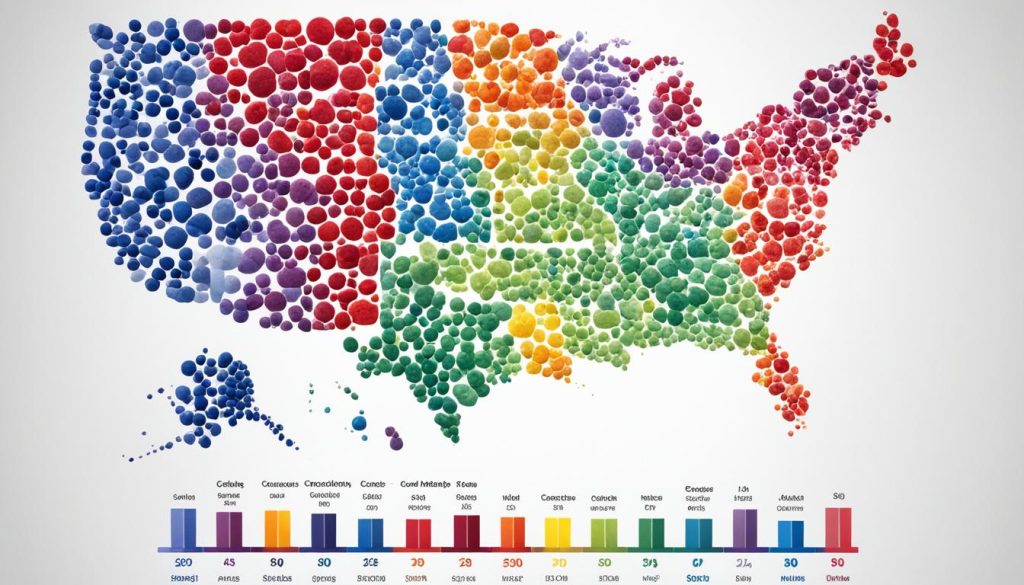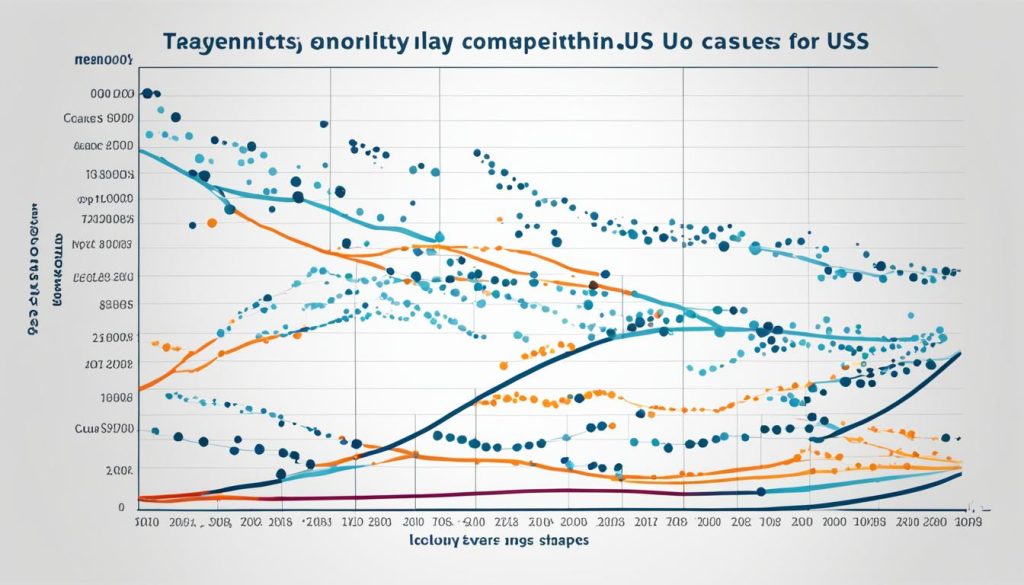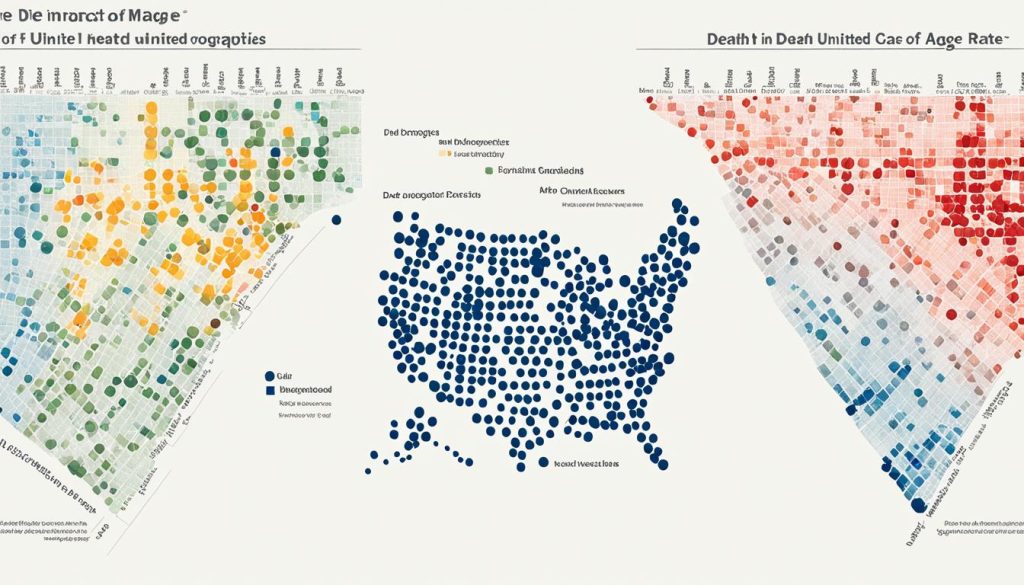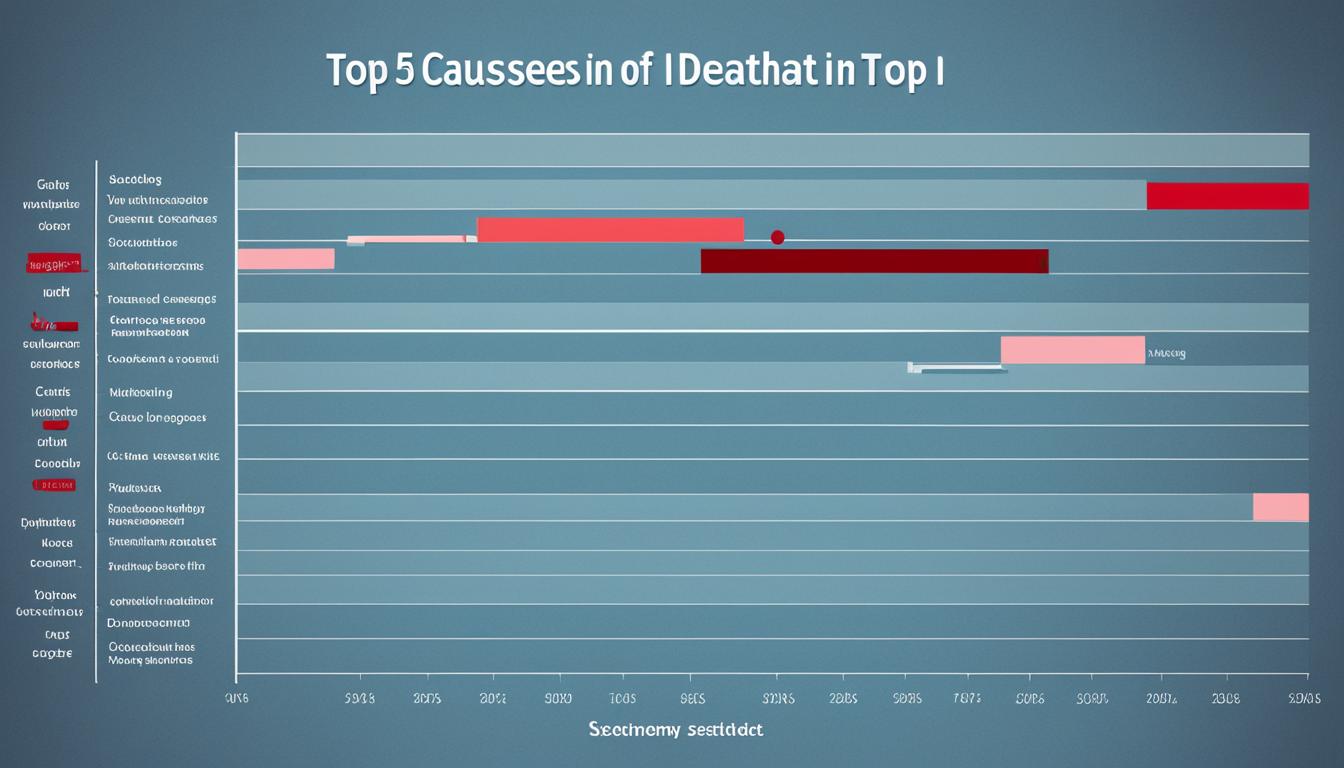Have you ever wondered what the leading cause of death in the United States is? With the statistics on leading causes of death in the US, it’s important to understand the top cause of death in America. According to the CDC, the leading causes of death in the US are heart disease, cancer, and COVID-19. These three causes alone account for more than half of all deaths in the country.
Heart disease and cancer have consistently ranked at the top for over a decade, but the emergence of COVID-19 has brought new challenges and impacted mortality rates. In 2021, there were a total of 3,464,231 deaths in the US. Heart disease, cancer, and COVID-19 caused more than 37% of those deaths. In fact, the top 10 causes of death accounted for nearly 75% of all deaths in the US.
Understanding the common causes of death in the United States is crucial for addressing public health concerns and implementing targeted interventions. By raising awareness and focusing on prevention, we can work towards reducing the impact of these leading causes of death on our population.
What is the Leading Cause of Death in the US?
Leading Causes of Death in the United States
According to the CDC’s analysis of 2021 data, the leading causes of death in the United States encompass a range of health issues. These casualties have a significant impact on the mortality rates in America and reflect the common reasons for death in the country.
Here are the top 10 leading causes of death in the United States:
- Heart disease – 695,547 deaths
- Cancer – 605,213 deaths
- COVID-19 – 416,893 deaths
- Accidents – 224,935 deaths
- Stroke – 162,890 deaths
- Chronic lower respiratory diseases – 142,342 deaths
- Alzheimer’s disease – 119,399 deaths
- Diabetes – 103,294 deaths
- Chronic liver disease and cirrhosis – 56,585 deaths
- Kidney disease – 54,358 deaths
These leading causes of death are responsible for a significant proportion of mortality in the United States. Heart disease stands as the primary cause of mortality in America, with cancer and COVID-19 following closely behind. Other health issues such as accidents, signs of stroke, and chronic lower respiratory diseases also contribute to the deadliest health issues in the US.
Understanding these leading causes of death and their prevalence is crucial for healthcare professionals and policymakers to develop effective strategies to combat these illnesses and improve overall population health in the United States.

Stay tuned for the next section where we will explore the trends in mortality rates and the evolving landscape of causes of death in the United States.
Trends in Mortality Rates
Over the past two decades, there have been significant changes in mortality rates in the United States. While the death rates for heart disease and cancer have dropped, there has been a concerning increase in the death rates for other conditions.
Heart disease and cancer, the leading causes of death in the US, have seen improvements in management and treatment. This progress can be attributed to advancements in medical technology, early detection, and increased awareness about prevention strategies. These positive trends reflect the efforts of healthcare professionals and public health initiatives.
However, it is important to note that not all conditions have seen a decline in mortality rates. Alzheimer’s disease and unintentional injuries have witnessed a significant surge in death rates, and these trends are cause for concern.
The increasing death rates for Alzheimer’s disease emphasize the need for continued research and a better understanding of the underlying causes and risk factors. This debilitating condition requires focused efforts to develop effective treatments and improve the quality of life for affected individuals.
Similarly, the rising death rates for unintentional injuries highlight the importance of prioritizing safety measures and public awareness campaigns. From workplace accidents to car crashes, preventing such injuries is crucial in reducing mortality rates associated with these incidents.
It is worth mentioning that since 2020, mortality rates have been heavily influenced by the COVID-19 pandemic. The impact of this global health crisis on death rates cannot be understated, and it has highlighted the need for robust public health infrastructure and emergency response systems.

Understanding the changes in death rates over time provides valuable insights into the overall health of the population. By identifying trends and patterns, policymakers and healthcare professionals can develop targeted interventions and allocate resources effectively to address the specific challenges posed by different causes of death.
Effects on Public Health Strategies
The shifting mortality rates underscore the importance of adapting public health strategies to the evolving landscape of disease prevalence and risk factors. There is a need for tailored prevention and treatment initiatives, focusing on the conditions with rising death rates.
Additionally, the impact of the COVID-19 pandemic has further emphasized the significance of preparedness and the importance of safeguarding public health at a systemic level. Understanding trends in mortality rates allows authorities to anticipate and plan for future health crises.
| Cause of Death | Mortality Rate per 100,000 population |
|---|---|
| Heart disease | 168.5 |
| Cancer | 146.4 |
| COVID-19 | 99.8 |
| Accidents | 51.1 |
| Stroke | 37.0 |
Source: CDC, 2021 Mortality Data
Understanding the trends in mortality rates and their underlying causes is crucial in developing effective strategies for disease prevention, improving healthcare infrastructure, and promoting overall population health.
Demographic Patterns and Health Disparities
Different populations within the United States experience varying rates of mortality and disparities in health outcomes. Understanding the demographic patterns of death in the United States can provide valuable insights into the factors influencing death rates in different populations and help address health disparities in mortality rates.
One example of demographic patterns in mortality rates is the difference between men and women. Men tend to have higher death rates for cancer and heart disease, which are two of the leading causes of death in the United States. On the other hand, women have higher death rates for Alzheimer’s disease, a condition that disproportionately affects them.
Racial and ethnic groups also experience disparities in mortality rates. For instance, Black Americans have higher rates of heart disease and high blood pressure compared to other populations. American Indians or Alaskan Natives face higher rates of unintentional injuries and chronic liver disease and cirrhosis. Native Hawaiians or other Pacific Islanders have increased rates of diabetes.
It is important to address these disparities and understand the underlying factors contributing to them. Social determinants of health, such as access to healthcare, socioeconomic status, education, and environment, play significant roles in shaping health outcomes and mortality rates among different populations. By addressing these factors and implementing targeted interventions, we can work towards reducing health disparities and improving overall population health.
Factors Influencing Death Rates in Different Populations
Several factors contribute to the differences in death rates among different populations in the United States. These factors include:
- Socioeconomic status: Individuals with lower socioeconomic status often face barriers to healthcare access and may have limited resources to prioritize their health and well-being.
- Education: Higher education levels are associated with better health outcomes and lower mortality rates.
- Health behaviors: Lifestyle choices, such as smoking, physical inactivity, and unhealthy diet, can contribute to an increased risk of developing chronic diseases.
- Genetics: Genetic factors can influence an individual’s susceptibility to certain diseases.
- Environmental factors: Exposure to environmental hazards, pollution, and unsafe living conditions can impact health and contribute to higher mortality rates.
Understanding these factors and their impact on mortality rates is crucial in developing effective public health interventions and policies to reduce health disparities and improve health outcomes for all populations.

| Racial/Ethnic Group | Leading Causes of Death |
|---|---|
| Black Americans | Heart disease, high blood pressure |
| American Indians/Alaskan Natives | Unintentional injuries, chronic liver disease and cirrhosis |
| Native Hawaiians/Other Pacific Islanders | Diabetes |
Conclusion
In conclusion, heart disease, cancer, and COVID-19 continue to be the leading causes of death in the United States. These conditions have a significant impact on mortality rates, with heart disease and cancer consistently ranking at the top for over a decade. While advancements have been made in managing certain diseases, there are also emerging challenges to address, such as the increasing death rates associated with Alzheimer’s disease and unintentional injuries.
Understanding these trends and disparities in health outcomes is vital for developing targeted interventions and improving overall population health in the United States. By identifying and addressing the factors contributing to these leading causes of death, we can implement effective strategies to reduce mortality rates and enhance the well-being of individuals across the country.
As we move forward, it is crucial to continue investing in research, prevention, and early detection methods to combat these conditions. By focusing on these areas, we can work towards a healthier future and ultimately reduce the impact of these leading causes of death in the US.




